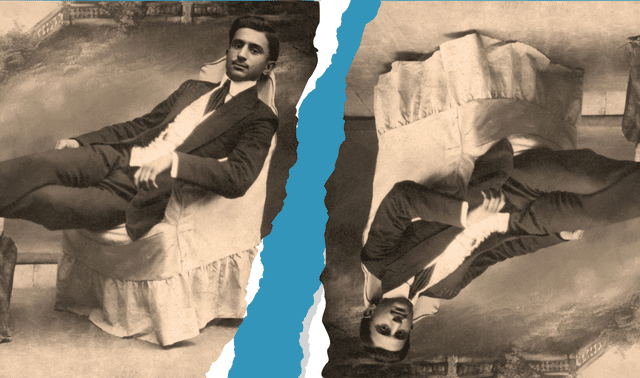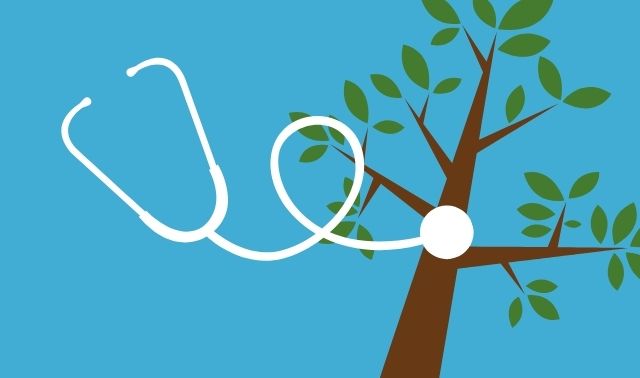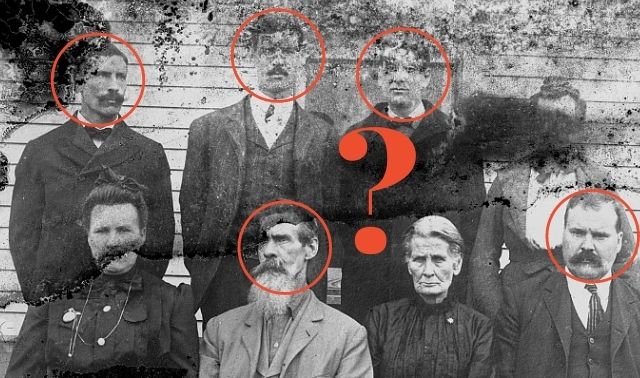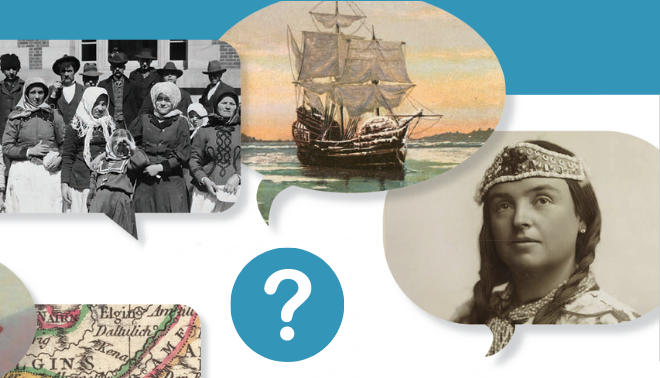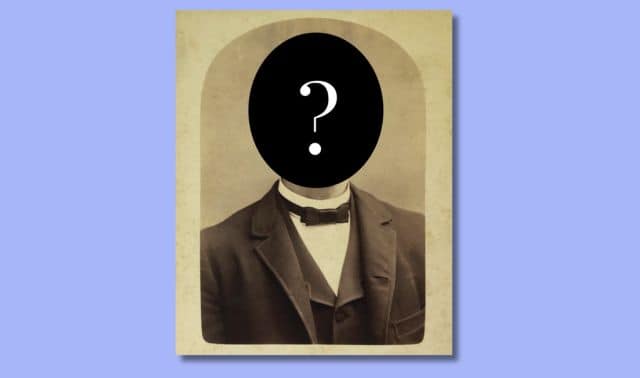Sign up for the Family Tree Newsletter Plus, you’ll receive our 10 Essential Genealogy Research Forms PDF as a special thank you!
Get Your Free Genealogy Forms
"*" indicates required fields
Genealogists are lot like doctors: We have to look for and diagnose a variety of “ailments” that trip up our research. We also have a responsibility to prevent the spread of inaccurate or misleading research.
A good genealogist knows that every piece of information has the potential to contain errors, no matter what the source: the Internet, a book, Aunt Susie, a journal article or even an original record.
To avoid spreading errors to unwary family historians (or running up against a brick wall yourself), you don’t have to become a DGD (doctor of genealogical diagnostics), all you have to do is be aware of the common genealogy errors, where they come from, and how to correct them.
Here are five common errors and how you can stop them in their tracks.
1. Intentionally Incorrect Genealogies
In family history, we hope the genealogies others have compiled are accurate, but could another genealogist lie? ‘Fraid so. Intentionally fraudulent genealogies were a bigger pitfall in the past, when someone wanted to join a lineage society or felt his social standing would be improved with a more illustrious family tree. If you happen to find and use one of those sham pedigrees, your genealogy is in for a nasty illness.
Sometimes our ancestors deliberately lied, too—even on legal documents. Suppose Uncle Tommy wasn’t quite of age to serve in the military but really wanted to enlist. He might’ve monkeyed with his birth certificate or lied about his age. In some cases, you won’t know if your ancestors fibbed, but you may uncover other records or details that don’t jibe with the questionable source. Then you know you’re dealing with a case of intentionally altered information.
Always be critical of the information you find in published genealogies. Be especially wary of research from the early 20th century that aims to connect someone to a noted ancestor. Make sure you know how to do some basic genealogy fact-checking. It’s also worth knowing about some famous flawed trees. The most notorious family tree faker was Gustave Anjou (1863-1942)—and the Family History Library (FHL) in Salt Lake City still has more than 100 of Anjou’s creative ancestral compilations on its shelves. Protect your pedigree by consulting the FamilySearch Wiki’s list of fraudulent genealogies, including Anjou’s.
2. Incorrect or Illogical Dates
I’ve discovered a date condition to which genealogists seem predisposed. In this disease, the dates don’t make any sense and seem to get inflamed each time they’re repeated. Let’s call this one “Dateitis”.
These errors are especially common and unfortunately, very contagious. I’ve seen cases where Mom gave birth at age 12, or she’s having more menopause babies than she did in her childbearing years. Dad got married at age 11. Kids were born before their parents or less than nine months apart. Boys enlisted in the service before puberty. Twins were born on different days. Unsuspecting genealogists perpetuate these over and over again online. No one bothered to check the dates to see if they made any sense.
Here’s an example of Dateitis from a real genealogy I consulted on. (In fact, all the cases presented here are from real genealogies, but I’ve changed some names to protect their privacy.)
The Case: Susannah Ormsby was born Dec. 31, 1842, in Wilkes County, NC; died June 8, 1874, in Wilkes County, NC; married Jan. 15, 1867, at the home of her father, Henry Evans Drummond. Their children, all born in Wilkes County, were:
- William, b. Sept. 5, 1867
- Clara, b. May 5, 1869
- Anna, b. Sept. 9, 1870
- Thomas (twin), b. June 22, 1874
- Henry (twin), b. June 22, 1874
The Error: Susannah gave birth to twins two weeks after she died.
The Solution: Go back to all your sources to make sure you’ve entered the information correctly. In this case, it was a simple typo: The month of Susannah’s death should’ve been July, not June. But what if you double-check your sources and find you didn’t mistype anything? Then you have to wonder whether the source is wrong. Certainly, errors do occur in records, even when dates are carved on a tombstone. If this is the case, you need to explain the problem and discrepancy in your notes.
Always thoroughly check the information in online family trees before adding it to your own. Making timelines of your ancestors’ lives is a good way to catch these errors before they spread!
3. Lazy Lineages
When a researcher links a child to parents who can’t possibly be hers—although the names and places of residence are the same—her family tree contracts “Lineagaires Disease”. Let’s look at one from Ancestry World Tree.
The Case: William Hillman was born about 1748 in Somerset County, Md. He married Sally Perkins, who was born about 1752. They had a son, also named William Hillman, who was born about 1764 in Somerset County, Md., died about 1835 in Scott County, Va., and was buried in Moore Cemetery, Dungannon, Scott County, Virginia.
The Error: William Sr. would’ve been 16 when his son was born, and Sally would’ve been 12. Though this is physically possible, how good are the odds it’s true?
The Solution: This genealogy will require several tests and theories to arrive at the best treatment, including research into original records such as land deeds, tax records, probate files and court cases.
4. Same Name, Wrong Ancestor
Let’s stay with William Hillman Jr. a moment longer, because all of a sudden, he’s presenting with more symptoms. Another genealogist reported that William served in the Maryland Regiment in the Revolutionary War. If William’s birth year of 1764 is correct, he would’ve been 11 when the war started in 1775. The Revolution spanned from 1775 to 1783, so it’s possible he served toward the war’s end—plus, a number of youngsters did serve as drummer boys and tend to the horses.
Index to Revolutionary War Service Records by Virgil D. White (National Historical Publication Co., out of print) shows that a William Hillman served in the Revolutionary War from Somerset County, Md., but this William was born about 1753-1754 and died in Somerset County Aug. 16, 1822. The wives’ and children’s names didn’t match, either—but someone must have found this other William and because the name and place were the same, assumed it was the “right” William.
As mentioned above, this error will require some additional research to correct. Original records should be the first stop. Timelines and cluster research are other great ways to parse through same-named ancestors and identify the right person.
5. Flattering Falsehoods from Misleading Biographies
Our last case is a tricky one: We’re attempting to settle a long-running debate about Abraham Riggs—did he serve in the Revolutionary War? Online, you’ll find many references to his service, including this glowing biography, which has been repeated over and over again in various wording (and naturally, provides no source). Let’s call this affliction Misleading Biography Disease.
At the age of 18 [Abraham Riggs] joined the American Revolutionary Army, serving with great distinction throughout the great war for America’s independence or until 1781. He was badly wounded in the battle of Brandywine in 1777 and carried scars of this conflict up to the time of his death. At the age of 85 he was offered a pension by the U.S. Government and more from family pride and lack of necessity, than haughtiness, he refused same. He died at the age of 86 and was always considered one of the great lights of the Revolutionary War.
The government didn’t just “offer” someone a pension for war service. The veteran had to apply for it, usually because he needed it. So if Abraham applied for a pension, why would he then turn it down?
The file also contained the War Department’s decision. They rejected his application, stating that “our records afford no evidence of his alleged service in the Virginia line,” and he hadn’t given sufficient information to confirm his claim. The War Department also wanted to know why Abraham had waited so long to apply, and why he hadn’t applied under the pension act of 1818. No further response from Abraham was in his file.
Next, we’ll check all the sources relating to Revolutionary soldiers we can think of, from printed publications to microfilms of rosters to anything we can find online. The results: no proof of Abraham’s service. After considering all the evidence, it’s obvious that Abraham is suffering from a case of Misleading Biography Disease.
Sadly, errors like these are quick to spread and hard to correct. The legend of Abraham’s service is too widespread and—like any epidemic—impossible to eradicate unless everyone is inoculated and treated.
All we could do in this case was document our findings in our files and in the information we share. If you find false or misleading information in family biographies or stories, the best you can do is make sure to clearly document your research for future generations.
Now you have a greater understanding of diagnostic genealogy and how diagnosticians work—and can use your training as preventative medicine for your own family tree!
Last updated: January 2023
ADVERTISEMENT

